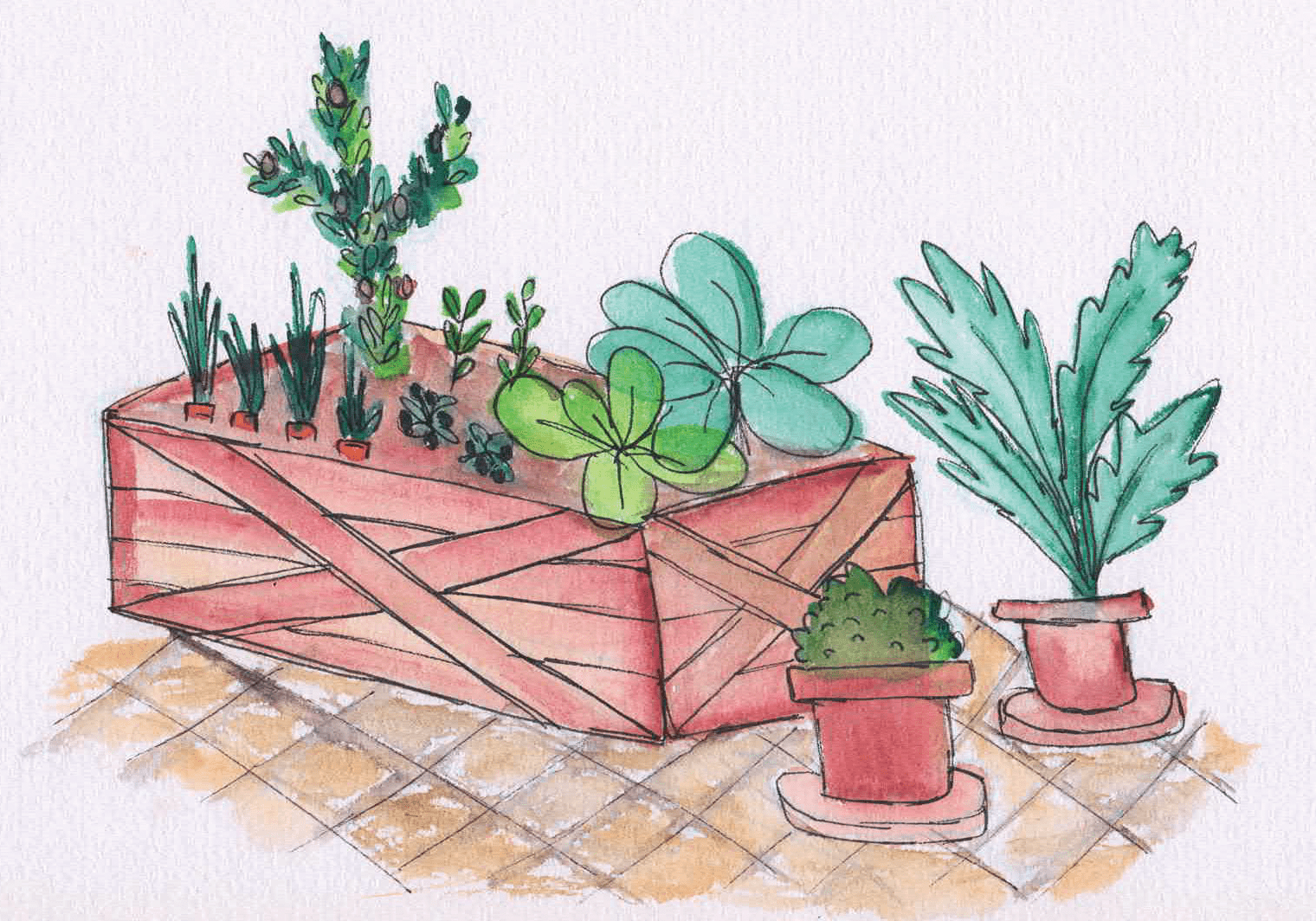The community garden at our University is a mysterious place. Overgrown herbs fill every crack in the ground. Empty pots sit tumbled in heaps on metal workbenches. Even the greenhouse roof flutters in the wind, torn to shreds over time by a particularly bold pair of noisy miner birds.
The place certainly lives up to its name of ‘Ground up’ community garden — most of the timber that holds the place together has been salvaged from recycling bins — or more recently, from the dumps at the PNR construction site. As you can imagine, the upcycled aesthetic almost perfectly fits a garden focused on “creating joy, out of what there is.” After all, the garden doesn’t receive any funding from the University and is left to run on a patchwork of supplies from the Bunnings clearance bin, generously contributed by a small group of community volunteers, which I joined at the beginning of this year.
But despite its dilapidated exterior, the community garden is always beautiful. In summer months, tomatoes climb up a fishing line and strawberry plants grow in the husk of an old wheelbarrow, half buried in the dirt. The thirteen garden beds, each one around a metre wide and ten metres long, are carpeted in flowers — nasturtium, sunflowers, borage, cosmos and whatever seeds the wind decides to bring with it. The flowers are highly beneficial for the local bees and dragonflies, which have greatly declined in recent years due to the lack of biodiversity in urban areas and society’s general dislike for creepy crawly things. Many insects find a meal or a home in this small garden, no bigger than the size of two tennis courts, and in return the soft scent of honey often catches in the air.
In Autumn and Winter, the rains and cooler temperatures mean the beds are filled with edible foods; rocket, lettuces, spinach and silverbeet and all manner of vegetable staples, bursting with lush vibrant greens that almost glow in the right sunlight. These seasons help promote a much closer connection and appreciation of the food we eat. Indeed, there’s something about seeing how much effort goes into growing an eggplant, or waiting six months to grow a bowl of broad beans that’s truly eye opening — many of us rarely stop to appreciate the foods we have access to today.
Fruits and vegetables also require a great deal more nutrition from the soil than flowers do, so the soil at the garden is constantly being cultivated by volunteers. The compost system breaks down garden clippings into fresh soil — rich and deep with the smell of mushrooms and decay. The cycle of decay and rejuvenation defines the simple relationship volunteers have with the space. When you take something from the garden, you have to give something back.
There are issues too — the garden is susceptible to the occasional snail attack and could do with a real mini-greenhouse instead of the overturned fish tank currently in use. But far more than a means of producing food for volunteers, the garden plays a much more meaningful role for campus life.
At a time of so much mental stress, stepping into a lush garden, calmly vibrating with life, is extraordinary in its ability to relieve symptoms of anxiety, depression and isolation. An act as simple as watering a plant can remind you to care for yourself, in the same way that you care for each seedling; a gentle reminder to drink some water, get some sunlight and breathe fresh air.
The garden makes do with what it has — and it doesn’t need anything more to provide a healing, charming and joyful place for the community. It’s a small monument to the fact that with enough resourcefulness and creativity, there will always be enough light, enough dirt and enough time to find enjoyment and accomplishment in something wonderful.
I hope that once we return to campus, many more will be able to appreciate this beautiful space. And to anyone who has been struggling through these difficult periods we have endured, please come and say hi. There is much more room for those who want to experience it for themselves.





